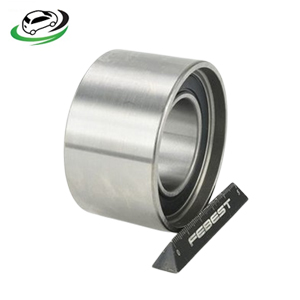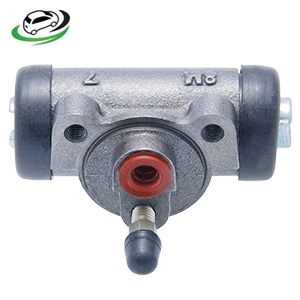-13%
Get Ford Ranger/Everest Rear Wheel Brake Cylinder
The wheel brake cylinder, also known as the wheel cylinder, is a crucial component of drum brake systems found in many vehicles. It plays a pivotal role in applying hydraulic pressure to the brake shoes, causing them to press against the inner surface of the brake drum, thereby slowing down or stopping the vehicle. Here’s a deep dive into the definition and function of the wheel brake cylinder:
1. Construction and Components:
- Cylinder Body: The wheel brake cylinder is typically a cylindrical metal housing containing various internal components.
- Piston: Inside the cylinder, there is a piston that moves back and forth in response to hydraulic pressure changes.
- Seals and Boots: Seals and boots are present to prevent fluid leaks and contamination from dirt and debris.
2. Function:
- Hydraulic Pressure Transmission: When the brake pedal is depressed, hydraulic fluid from the master cylinder is sent through brake lines to the wheel brake cylinders.
- Piston Movement: The hydraulic pressure forces the piston within the wheel cylinder to move outward, pushing the brake shoes against the brake drum.
- Braking Action: This action creates friction between the brake shoes and the brake drum, slowing down or stopping the rotation of the wheel.
3. Role in Drum Brake System:
- Brake Shoe Actuation: The wheel brake cylinder is responsible for actuating the brake shoes, which press against the brake drum to generate friction and decelerate the vehicle.
- Mechanical Advantage: The hydraulic pressure created by the wheel cylinder amplifies the force applied to the brake shoes, allowing for effective braking performance.
4. Importance in Vehicle Safety:
- Primary Braking Component: In vehicles equipped with drum brakes, the wheel brake cylinder is a primary component responsible for converting hydraulic pressure into mechanical force to stop the vehicle.
- Reliable Operation: Proper functioning of the wheel brake cylinder is essential for safe and efficient braking performance, ensuring the vehicle can stop effectively in various driving conditions.
5. Maintenance and Repair:
- Inspection: Regular inspection of the wheel brake cylinders is essential to check for leaks, corrosion, and proper operation.
- Replacement: If a wheel brake cylinder is found to be leaking, corroded, or malfunctioning, it should be replaced promptly to ensure optimal braking performance and safety.
Signs a car needs a new one;
1. Brake Fluid Leaks:
- Visible Fluid Leaks: If you notice brake fluid leaking from the wheel brake cylinder, it’s a clear sign of a problem. Leaks may appear as wet spots or drips around the wheel cylinder. Loss of brake fluid can lead to decreased braking performance and safety hazards.
2. Soft or Spongy Brake Pedal:
- Reduced Brake Pedal Feel: A soft or spongy brake pedal feel, where the pedal sinks closer to the floor than usual when depressed, can indicate a leak or internal failure within the wheel brake cylinder. This can result in decreased braking efficiency and longer stopping distances.
3. Uneven Brake Application:
- Uneven Braking: If one wheel brake cylinder fails or malfunctions, it can cause uneven braking performance. You may notice the vehicle pulling to one side when braking, indicating that one brake is applying more force than the others.
4. Brake System Warning Light:
- Illuminated Dashboard Light: Some modern vehicles are equipped with a brake system warning light on the dashboard. If the light illuminates, it could indicate a problem with the brake system, including issues with the wheel brake cylinders.
5. Corrosion or Rust:
- Visible Corrosion: Inspect the wheel brake cylinder for signs of corrosion or rust, especially around the cylinder bore and piston areas. Corrosion can weaken the cylinder’s structure and lead to leaks or operational issues.
6. Brake Dragging:
- Brake Drag: A malfunctioning wheel brake cylinder may fail to release properly after the brake pedal is released, causing the brake shoes to drag against the brake drum. This can result in excessive heat buildup, accelerated brake wear, and reduced fuel efficiency.
7. Reduced Braking Performance:
- Increased Stopping Distance: If you notice an increase in the distance required to bring the vehicle to a stop, it could indicate reduced braking performance due to a failing wheel brake cylinder.
Follow us on Facebook for more parts.



